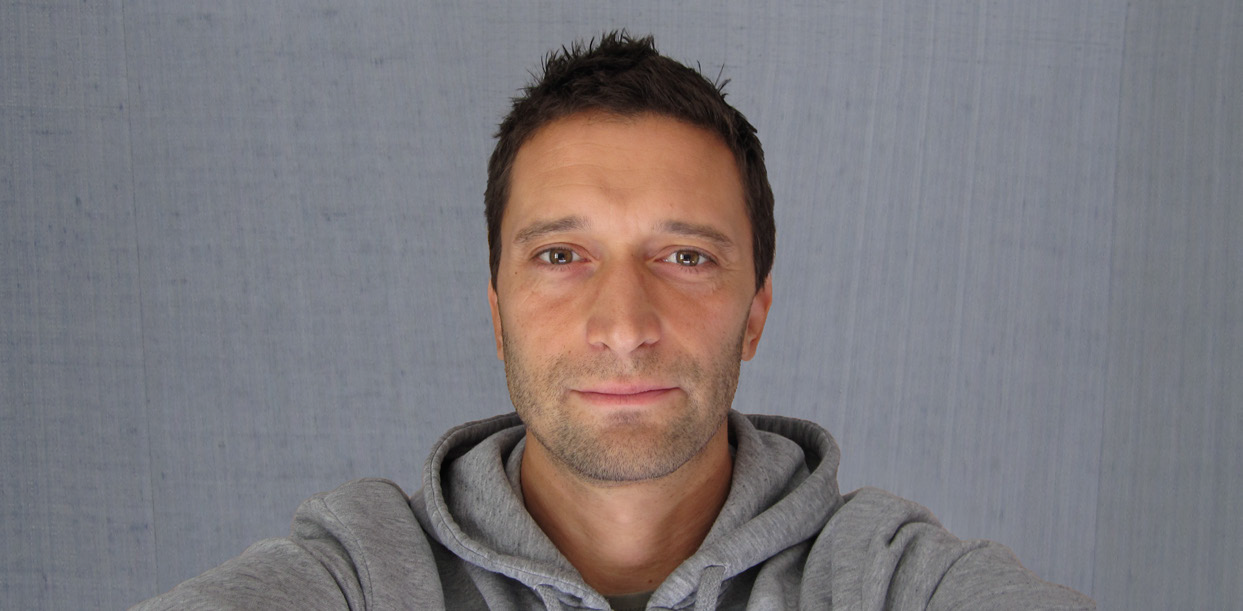Through a Hungarian Lens
The 49-year-old DP’s credits – whose younger brother also works in the film industry as a special make-up effects artist – go back almost 20 years. He started out as a photographer, and soon after the collapse of communism in Hungary he joined a liberal newspaper, Magyar Narancs, working as its photo editor between 1992 and 1995. He then went on to study cinematography at the Hungarian School of Theatrical and Cinematic Arts. Ever since his film debut in 1999, he has been steadily working with some of the most exciting Hungarian helmers, including György Pálfi, Roland Vranik, Benedek Fliegauf and Virág Zomborácz.
Perhaps the most impressive thing about Pohárnok is not just the undeniable aesthetic beauty of many of his shots, but rather his versatility, a seemingly effortless, formal dexterousness and a willingness to adapt. His imagery might be both stylised and unadorned, distinct without being obtrusive, restrained and at the same time empathetic; fluid in motion or geometrically precise in fixed compositions, eyepopping with expressive use of colour or instead stark in black and white. Highlights result from his partnership with the auteur György Pálfi, whether it is the chiaroscuro lighting in the mordantly funny, grotesque body horror of ‘Taxidermia’, as if painted by a horny, gore-loving bastard child of Rembrandt; the microcosmic scale of capturing small animal life in the experimental ‘Hukkle’; or the variations in style from sitcom to sci-fi, as seen in ‘Szabadesés’.
Over the last decade, Pohárnok has shot several films abroad, primarily in Italy, where he spends 3-4 months every year delivering features and commercials (or teaming up with bombastic Academy Award-winner Paolo Sorrentino for a sponsored short film). When asked in a telephone interview about the differences between Hungarian and Italian shooting styles, Pohárnok claims that they are mostly very similar. “You need to shoot as much material as you can in the shortest time possible, which is very expensive”, says the DP, adding that Italian filmmakers tend to have more room for improvisation. “The whole country is chaotic and messy, and the general response to that is embracing the unplanned. It’s very liberating: since everyone is bound to make mistakes this way, you don’t have to be afraid of making them to be a bit more playful.”
The same goes for Valeria Golino, a two-time director who likes to err on the side of spontaneity rather than resort to meticulous overplanning. “She hates doing storyboards, and she prefers making decisions for individual scenes on set”, Pohárnok tells us. “We talked through the basics in prep, of course, about the overall visuals, how much handheld would be used, etc. But we had a lot of freedom and a lot of leeway filming ‘Euphoria’, allowing for happy accidents.”
However, Pohárnok is not the only Hungarian lenser who has been enjoying international success in the last couple of years. On the contrary: he is part of a larger group of DPs who are on the rise. Gyula Pados (‘Kontroll’, ‘Fateless’), who is the same age as Pohárnok, worked his way to Hollywood blockbusters, framing The Rock in ‘Jumanji: Welcome to the Jungle’ and shooting the second and third instalments of the ‘Maze Runner’ franchise. Mátyás Erdély established a harrowing subjectivity for the Holocaust drama ‘Son of Saul’ by using shallow focus and, even before that, he had worked on festival darlings like ‘Miss Bala’ and ‘James White’. After receiving praise for his stunning, bravura photography on ‘Jupiter’s Moon’, directed by Kornél Mundruczó (a household name in Cannes), Marcell Rév’s most recent credits are the HBO movie ‘Paterno’, starring Al Pacino, and this year’s Sundance sensation ‘Assassination Nation’.

Gergely Pohárnok
This wave of success and recognition is not without historical precedent. In the aftermath of Soviet troops crushing the Hungarian Revolution of 1956, hundreds of thousands of people fled the country. Amongst them were a couple of young, emerging cinematographers, Vilmos Zsigmond and László Kovács, who emigrated to the United States and became essential and influential figures of the New Hollywood movement in the 1970s, scanning the who-is-who of the era’s leading American directors. (Zsigmond’s most popular films are ‘The Deer Hunter’ and ‘Close Encounters of the Third Kind’, and Kovács is most famous for ‘Easy Rider’ and ‘Five Easy Pieces’.)
It is very exciting to see a new generation of cinematographers receiving offers to work on big-budget spectacles, European arthouse films and American indie hits, as well as continuing to lense Hungarian films. (Pohárnok’s next collaboration with Pálfi and Erdély’s sophomore film with László Nemes are both due to be released this year.) “I’m so stoked for these guys breaking into the international big leagues”, enthuses Pohárnok about his peers. “They are incredibly talented people and deserve every ounce of success.” He partly attributes this recent expansion to the fact that filmmaking is an internationally permeable, relatively open profession, though if you want to break through, you better make a splash at a film festival. “The arthouse market is flooded with an immense amount of movies, and an A-list festival presence or an important award can successfully bring a director, an actor or a DP into focus.
What about his own success? Has it becomeroutine for him to have yet another film at Cannes? “No, there’s no getting used to that”, laughs Pohárnok, who now lives in Berlin with his family and alternates between jobs in different countries. “This is a big deal, I couldn’t be happier.”
András Huszár
